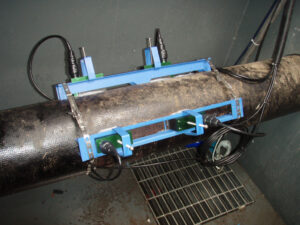Thermal mass flow meters (TMF) are the only flow technology that can measure air mass flow directly without additional instruments to correct the dynamic changes of temperature and pressure within a flow stream. The merits of mass flow metering are discussed here. TMFs are a critical component of a vehicle’s engine management system. The TMF flow meter measures the mass of air entering the engine and sends this information to the engine control module (ECM).
The ECM uses this information to calculate the appropriate amount of fuel to inject into the engine’s combustion chambers. A malfunctioning TMF sensor can cause a variety of problems, including reduced fuel efficiency, rough idling, and engine hesitation or stalling.
Fixing a malfunctioning TMF sensor usually involves cleaning or replacing the sensor or related components, such as the air filter or intake tubing. It is important to diagnose the problem accurately and follow manufacturer guidelines when attempting to fix a malfunctioning TMF sensor.
What to inspect on Mass Air Flow Meters?
When inspecting a mass airflow (TMF) sensor meter, it’s important to check several components to ensure accurate readings and optimal engine performance.
One of the critical components to examine is the sensor element. This element measures the amount of air flowing through the system and should be free of any damage or debris that could affect its accuracy. Be sure to inspect the sensor element for any cracks, scratches, or other signs of wear.
Additionally, you should inspect the wiring and connections leading to the sensor. Check for any signs of wear or damage that could cause poor connections and inaccurate readings.
Finally, take a look at the air intake system. The TMF sensor meter is located in the air intake system, so it’s crucial to examine this system for any damage or debris that could affect its function. Be sure to check the air filter, intake tubing, and any other components that make up the air intake system.





